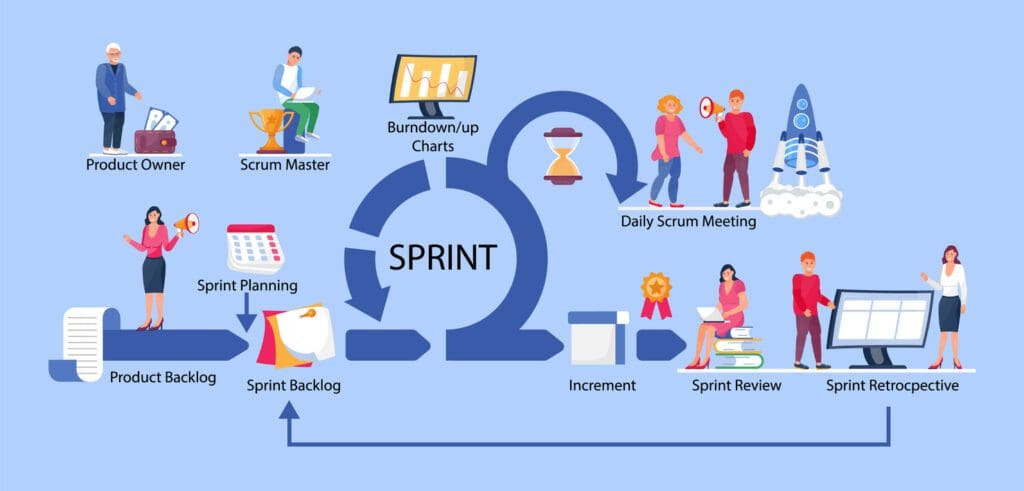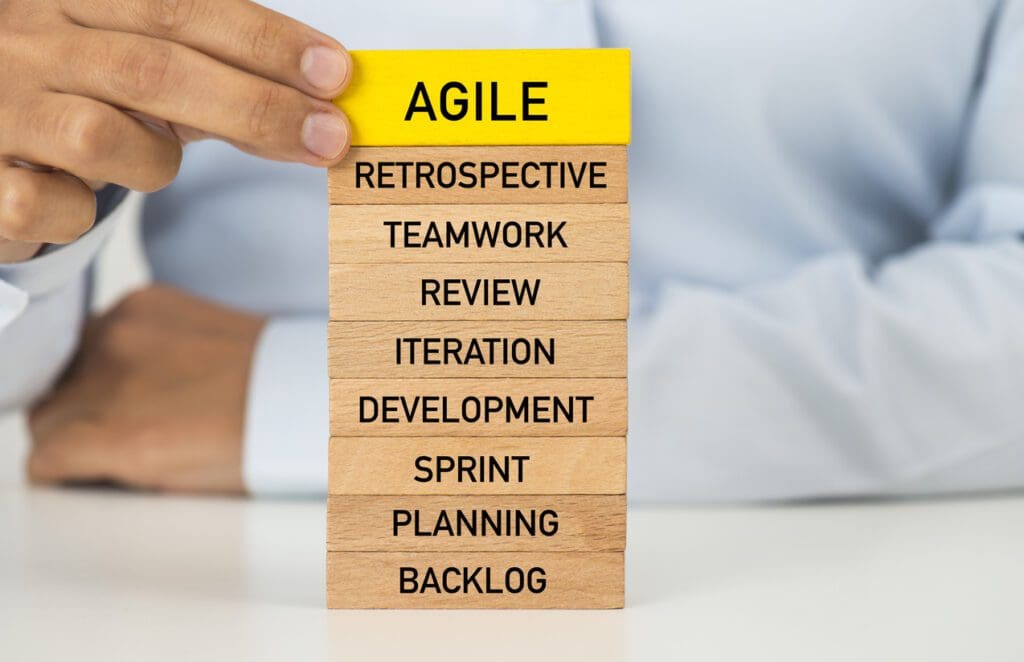Table of Contents
Agile vs Scrum – Comparing them head-to-head
Which of the most popular project management frameworks, Agile or Scrum, is ideal for you?
In this post, we will contrast the salient traits, advantages, and disadvantages of Agile and Scrum.
For someone entering the project management area freshly, navigating the unfamiliar terms and processes they can run contrary to in this demanding and specialised industry can be terrifying. As a member of the project management team, the person in charge of the project is responsible for overseeing several responsibilities and duties related to the project. The project managers are responsible for establishing a systematic approach to the planning and implementing of the projects they supervise, including all necessary auxiliary plans.
If you want to steer your efforts and verify the success of your project, choosing a suitable project management approach is essential. Many project management methods are available, but Scrum and Agile are two of the most popular.
If you are considering a career as a developer, project manager, or both, learning about the many parallels and differences between the two techniques would be beneficial. Agile is a project management philosophy based on core principles and values, whereas Scrum is an agile technique for accelerating project progress.
The article will review Agile and Scrum, explain their special characteristics, and highlight their main distinctions.
First, let’s know what the terms Agile and Scrum imply.
What is Agile?
Teams usually use an agile, cooperative, adaptable strategy to complete work more successfully and meet management objectives. An Agile approach consists of smaller chunks of tasks that can be finished in shorter amounts of time and released frequently instead of a single huge disclosure or release.
Project managers will find it easier to adjust to changing priorities, deal with problems as they arise, and reduce time, costs, and inefficiencies due to these advancements. Employing a structure or specific method for the project is important when integrating Agile concepts into an organisation or project.
Despite other software development methods, this methodology combines development and testing operations. Additionally, it promotes face-to-face interaction and collaboration among employees.Scrum is one of many segments of the larger category known as agile. Kanban, the Crystal Method, and extreme programming are subsets of the Agile approach, much like the Scrum methodology.
Scrum is one of many segments of the larger category known as agile. Kanban, the Crystal Method, and extreme programming are subsets of the Agile approach, much like the Scrum methodology.
Characteristics of Agile
- Sprints: In Agile product development, a sprint is an established period during which specific work must be completed and thoroughly prepared for the project that requires review. The strategy meeting or sprint planning is the first step in every sprint. The scrum master, who also serves as the team’s coordinator and Scrum framework administrator, determines how long a sprint will last.
- Scrum Meetings: Scrum Meetings are an aspect of the Agile approach in which a team meets and collaborates on a project regardless of whether management is present. This aspect of the agile methodology involves the team debating how to proceed with a project and solve challenges.
- Agile development generates a “inspect and adapt” strategy with an array of stakeholder groups, as evidenced by the regular evaluation and modification of process-associated goods and services (which is a crucial event held after each Programme Increment (PI) in which the train displays and evaluates the current status of the solution).
- Due to open communication with investors and other stakeholders and the project management process, the transparent approach may be implemented using online Agile Project Management technologies that include Team Foundation Service, Jira, Trello, Kanbanzie, and others.
What is Scrum?
The Scrum technique is an Agile software development and testing framework promoting collaboration and efficiency. Product backlogs, sprint backlogs, and sprint goals are the three components that make up a sprint in a Scrum-based development project. A single function is established, developed, and evaluated during each sprint.
Depending on the project’s complexity, each sprint lasts two to three weeks. It is easier and quicker to find a change in the sprint backlog than to repeat the entire software development lifecycle, as in a Waterfall strategy, if any business requirements change, requiring a difference in the code.
The Scrum Master is in charge of ensuring the project’s success with this structure in place. In addition to ensuring that the team adheres to Scrum adheres to and upholds deadlines, they are in charge of keeping the entire team on task.
Scrum is arguably the method of Agile development that is currently the most popular worldwide. According to the State of Agile research, approximately 78 per cent of Agile customers are using Scrum or a combination of Scrum approaches to managing their projects as of 2020. Two popular examples of hybrid Scrum methodologies are Scrumban and Scrum/XP.
Characteristics of Scrum
- Sprint Sessions: Project planning also involves setting an end date. Studies indicate that people typically underestimate or overestimate the amount of time required. Additionally, the perspectives of planners and executors frequently diverge.
Therefore, the executions ought to put the planners’ ideas into action. Scrum suggests sprint sessions as a result. This method splits the group into fewer teams of 3–9 people collaborating for some time. After a week, they evaluate the project’s advancement and prepare the subsequent sprint’s roadmap. The team is motivated to stay engaged with the task since the planners also serve as the executors of the plan, and as a result, the program is often modified.
- Show progress: Multiple teams work on different parts of a large-scale project, challenging team communication. Other teams’ achievements can be a great motivational tool. Scrum involves the creation of a chart to show everyone’s contribution. Sluggish workers may be encouraged to work more quickly, and active workers may be prompted to maintain their pace.
- Burndown Chart: To show how much work various teams have completed. They think displaying a diagram of an employee’s development will boost their morale and encourage them to put in more effort. Scrum suggests the contrary. The ‘Burndown’ chart is a weekly requirement of Scrum methodologies. The chart should display the number of unfinished tasks along each axis and the number of working days left to complete them. The graphic should also show how much work needs to be done and how many weeks the team will take to finish the project.
- Precise Meetings: Daily business sector meetings. Most of these conferences go on for hours and only help the project’s progress. Scrum stipulates that daily sessions take place. At most, 10-15 minutes should pass between them.


What is the Difference Between Agile and Scrum?
| Feature | Agile | Scrum |
| General Strategy | Iterative, gradual development | Iterative, gradual development |
| Project Organisation | Divided into smaller, easier-to-manage activities | Divided into sprints |
| Group Size | Typically small | Typically small |
| Communication | Regular communication between team members and stakeholders | Regular communication between team members |
| Adaptability | High | High |
| Documentation | Few documents needed | More documents needed |
| Project Compatibility | Ideal for an assortment of objectives | Suitable for projects with explicitly defined requirements |



